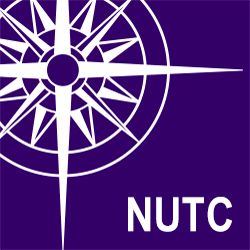NUTC Seminar: "Transit lines on a general parametric city: Feasible heuristics or strategic optimal?" - Prof. Sergio Jara-Diaz, Universidad de Chile

When:
Wednesday, November 2, 2016
4:00 PM - 5:00 PM CT
Where: Chambers Hall, Lower Level, 600 Foster St, Evanston, IL 60208 map it
Audience: Faculty/Staff - Student - Public - Post Docs/Docs - Graduate Students
Cost: FREE!
Contact:
Diana Marek
(847) 491-2280
d-marek@northwestern.edu
Group: Northwestern University Transportation Center
Category: Academic
Description:
Sergio Jara-Diaz, Professor of Transport Economics, Universidad de Chile
"Transit lines on a general parametric city: feasible heuristics or strategic optimal?"
___________
SPEAKER BIO:
Sergio Jara-Diaz is Professor of Transport Economics at Universidad de Chile. Ph.D. and M.Sc. from MIT, M.Sc. in Urban Planning from U. Cat61ica de Chile and Civil Engineer from U. de Chile. He is the founding member of the Transport Division at U. de Chile. Is author of Transport Economic Theory (Elsevier, 2007) and more than 80 research articles on users' behavior, value and use of time, industry structure on transport networks, public transport, optimal pricing and transport project appraisal. He resides in Santiago, Chile, with his only wife with whom he shares two sons and four grandchildren.
PRESENTATION ABSTRACT:
In this research we first propose a parametric description of cities for the normative analysis of transit systems with an emphasis on the role of centers and subcenters and the associated road network. This is achieved after a synthesis of different ways to describe a city's urban form that can be found in the literature, assessed with the help of topological indicators and synthetic information regarding real cities. The parameters characterize the underlying network, the zones involved and the spatial pattern of transport demand, such that the design of public transport systems can be studied normatively for different city shapes. Examples describing three very different real cities are given.
Using this parametric description we find the optimal spatial arrangement of transit lines out of four basic strategic competing options: direct, exclusive, hub-and-spoke and feeder-trunk. We identify clearly the relation between the characteristics of both the urban setting (mostly monocentric, polycentric or dispersed) and the users (perceived transfer penalty, patronage) with the line structure that shows the best response.
Finally, transit lines structures obtained with selected heuristics are compared against optimal strategic designs. We show that the ample space where direct-type lines dominate admit improvements with the help of one of the heuristics.